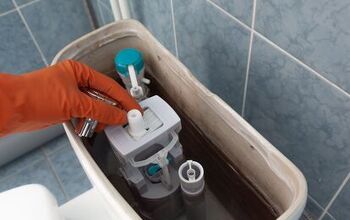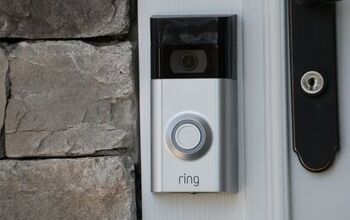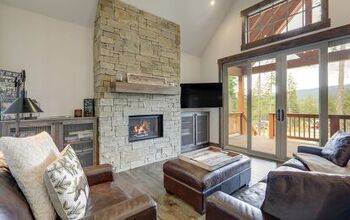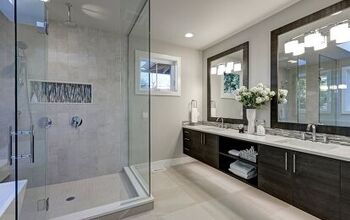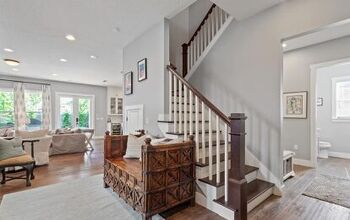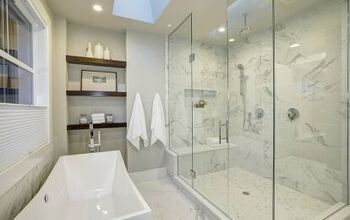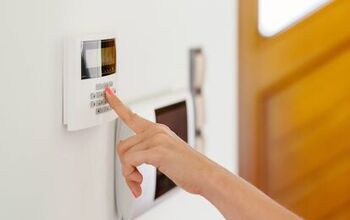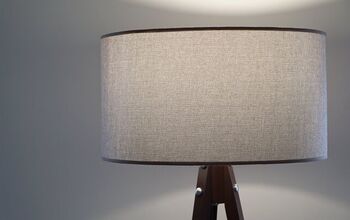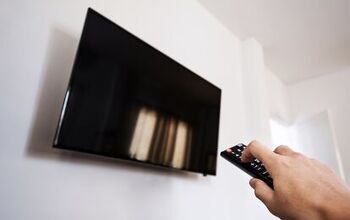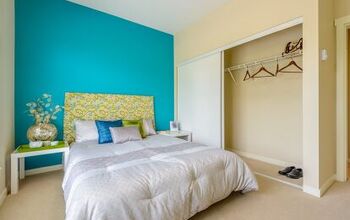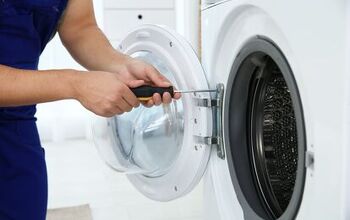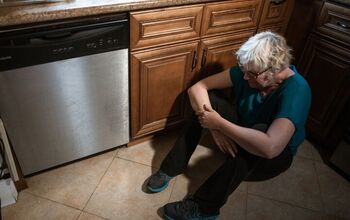How To Hang A Pegboard Without Screws

Pegboard can be one of the most useful organizational tools in your house or garage. They can be used for tools, crafts, or school supplies. While there are various uses, the only problem is hanging it up.
Not all of us want to be screwing nails into our walls. You may even be at your school dorm where it’s just not allowed. Others may cringe at the idea of screwing holes into the wall.
To hang a pegboard without screws, prep your pegboard and the wall first. Then, simply stick the command strips together and apply it to the pegboard. Finally, press the pegboard onto the wall, take it back down, wait an hour, and then apply it to the wall again.
No advanced tools or cleanup needed here. Let’s get started.
Do You Need Handyman Services?
Get free, zero-commitment quotes from pro contractors near you.

Using Command Strips To Hang Up A Pegboard
Before you rush away to buy command strips, I must ask you to stop. Using command strips is not as simple as sticking it on the wall and calling it a day.
There’s a particular method for perfect results, and I will detail that below. But first, you need to know the materials.
For this project you will need a 22” x 22” pegboard (1), bar (1), screws (4), spacers (2), level, painter’s tape, and command strips (16).
Now that you have all the materials, you’re ready to get started!
Step By Step Instructions
Hanging up a pegboard without screws is simple. Just follow the directions below and you will have it done in no time.
Step 1: Plan Out Your Pegboard
Screwing the bar in at the top of the pegboard is generally a good idea. After all, It will provide the majority of the support.
Now you only need to consider where you are screwing in the bar. Is there an item that you absolutely need to hang in that location? If so, you may want to reconsider the placement.
Otherwise, screw the bar in at the top. You can rely on the spacers at the bottom to keep the pegboard flushed to the wall.
Step 2: Prep Your Pegboard
Use two of the screws to attach the bar to the pegboard. The last two screws will be used to attach the spacers to the bottom. Once that’s done, the pegboard should be able to sit flush against the wall. If it’s not able to sit flush against the wall, then check the placement of the spacers. Sometimes, by adjusting these just a bit you can get it to sit correctly.
Step 3: Prepare The Wall
Start by washing down the wall with alcohol. This will make it easier for the command strips to bond to the wall.
Next, you are going to want to use a level to determine exactly where you want your pegboard to be. With the level in place, apply a strip of painter’s tape to the wall.
The tape should be located where you want the top of the pegboard to sit. You can always measure this before applying the tape sort of as a fail safe.
Step 4: Stick The Command Strips Together
This is a very important step that cannot be rushed! Take your 8 sets of command strips and stick them together. Make sure to spend 30 seconds on each command strip. This will seal them together, keeping your pegboard in place for the long-term.
Also, don’t allow them to stick to your fingers as this will take away the stickiness. It also makes for a big conundrum. So, take your time, go slow, and make sure they’re adequately sticking to one another before moving on.
Step 5: Do Surgery On Two Of The Command Strips
Only six of the command strips are meant for the bar. The other two are meant for the spacers.
The spacers are smaller, so they need smaller command strips. To make the perfect fit, simply cut off ⅓ of the command strips. You will need to do this twice, one for each spacer.
Special Note: Make sure not to cut off the little tab at the end of the command strip. It makes for easy removal later on in your pegboard’s life. (You don’t want to be struggling to get the sticky part off the wall!)
Step 6: Apply The Command Strips To The Pegboard
Line up 6 command strips on the bar of the pegboard. Place the two shorter ones on the spacers. In order to help them adhere, spend 45 seconds pressing each command strip into the board.
This may seem like a tempting step to skip, but forgetting it will keep your pegboard from adhering in the long-term. It’s a very tedious task but perhaps one of the most important. However, if you have kids who like to help you with DIY projects, this would be a great part for them to help you on!
Step 7: Press The Pegboard On The Wall
Now that the commands strips are firmly attached, it’s time to place the pegboard on the wall. This shouldn’t be that hard because there is already a level strip of tape to guide you.
Once the pegboard is on the wall, make sure to spend some time really pressing the pegboard into it. The strips need to be secure before doing the next step.
Step 8: Take The Pegboard Back Down
This may be counterintuitive, but it is an important step. Take the pegboard back down! However, be careful about it.
Watch the command strips, only allowing one side to remain fastened to the wall. Now you can start pushing the command strips into the wall. As priorly stated, doing this for 30 seconds per strip.
Step 9: Wait An Hour
Once the pegboard is down, wait an hour. This will allow the strips to really adhere to the wall. During this time you can unscrew the bar from the pegboard. This may seem to make the process harder, but it actually makes it a lot faster.
Aligning only the bar to the velcro is much easier than the entire pegboard. This simple step will result in much better results.
Step 10: Set The Bar
The bar should be lined up directly on the command strips. An even alignment will make for many years of solid performance.
Once the bar is on, make sure to push it in. Each command strip should be pushed in for 30 seconds each. You can check the stick by wiggling the bar a bit. If it gives way easily, then you didn’t press the command strips into place the correct way.
Step 11: Screw The Bar Back Into The Pegboard
The final step is to screw the bar back into the pegboard. Press the pegboard into the wall for a couple of minutes, and start attaching your accessories.
Pegboards can be used for just about anything, and now it is time to start having some fun! Hang out some accessories or maybe shelving nearby!
Related Questions
Can I use a glue-gun instead?
Glue is definitely an effective way of hanging something to the wall, but it is not damage-free. It will leave marks on your wall just as surely screws would. If you are looking for something that is wall-friendly, choose the command strips method. If you wish, you can always glue the command strips to the board, and then set it onto the wall.
Do I need to let the command strips rest for an hour?
The adhesives on the command strips take time to adhere. So if you let them sit for an hour without weight, it will be better attached when you are ready to apply the pegboard. This is a very important step that shouldn’t be left out. The longer you can hold and press them on, the better stick they end up having.
How much weight can my wall support?
Generally, a stud can hold up 80 to 100 lbs. So keep this in mind when hanging up your pegboard. Check out this article on increasing the weight a stud can hold. If you need to support something heavier, there are some additional steps that will need to be taken.
It’s important to note that you should never try to support something as heavy as 80 to 100 lbs with juts drywall. Heavy shelving should always be installed into the wall studs. If they’re not, you run the risk of breaking your belongings and ripping out your wall.
Do You Need Handyman Services?
Get free, zero-commitment quotes from pro contractors near you.

Wrapping Up
You don’t need to use screws to hang up a pegboard. Now that command strips are available anything can be hung up without damaging your walls!
This is a great technique for those of us that want to be extra careful. However, there is no doubt that screws work as well. If you want something that will stay up during an earthquake, choose screws.
But if you are like most people, command strips work just as well. They don’t tear up your walls, and they can last just about forever.
So, have fun hanging up your pegboards dent-free! It’s a great feeling to know that all your walls are blemish-free. Go slow, have fun, and enjoy your project!
Related Guides

We are a team of passionate homeowners, home improvement pros, and DIY enthusiasts who enjoy sharing home improvement, housekeeping, decorating, and more with other homeowners! Whether you're looking for a step-by-step guide on fixing an appliance or the cost of installing a fence, we've here to help.
More by Upgraded Home Team



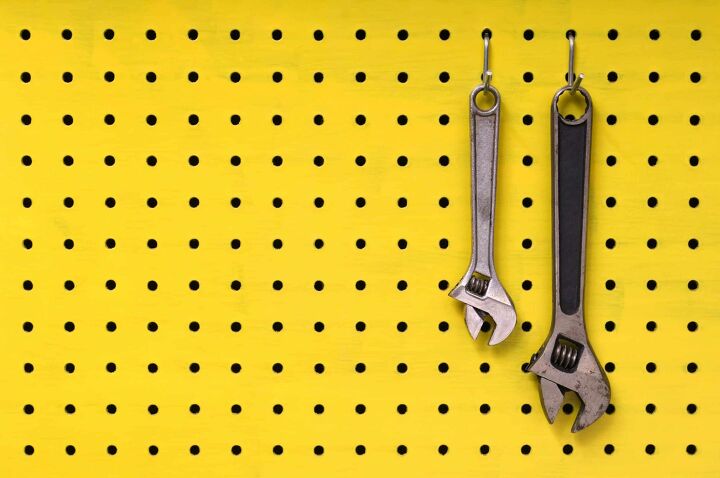






![10 Best Cordless Leaf Blowers – [2022 Reviews & Ultimate Guide]](https://cdn-fastly.upgradedhome.com/media/2023/07/31/9070789/10-best-cordless-leaf-blowers-2022-reviews-ultimate-guide.jpg?size=350x220)
